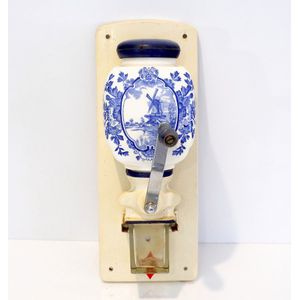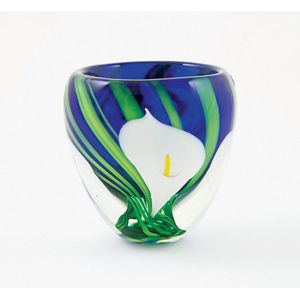Atkin Brothers Silver Tazza, Sheffield 1916
Early 20th century hallmarked silver tazza with scalloped edges and standing on a single foot. hallmarked Sheffied circa 1916 by Atkin Brothers, height 11.5 cm, diameter 21 cm weight 421g
You must be a subscriber, and be logged in to view price and dealer details.
Subscribe Now to view actual auction price for this item
When you subscribe, you have the option of setting the currency in which to display prices to $Au, $US, $NZ or Stg.
This item has been sold, and the description, image and price are for reference purposes only.
- Circa - A Latin term meaning 'about', often used in the antique trade to give an approximate date for the piece, usually considered to be five years on either side of the circa year. Thus, circa 1900 means the piece was made about 1900, probably between 1895 and 1905. The expression is sometimes abbreviated to c.1900.
- Tazza - A tazza is a shallow saucer-like dish, either mounted on a stem and foot, or on a foot alone, used for drinking or serving small items of food. The word is derived from the Italian for "cup", plural tazze. Tazza are usually found in silver, ceramics or glass.
- Scallop / Shell Motif - The shell motif has been used in furniture and decorative arts for centuries. In ancient Greece and Rome, shells were often used as decorative elements on furniture and in mosaics. The scallop or cockleshell are the most commonly used. During the Renaissance, the shell motif became popular in furniture and architecture, as the ornate decoration was seen as a symbol of wealth and luxury. In the 18th century, the Rococo style of furniture and decorative arts featured an abundance of shell motifs, and it was used by Thomas Chippendale and as a feature on Queen Anne style cabriole legs. In the 19th century, the shell motif was incorporated into Victorian furniture and decorative items, and often a representation of the the conch shell was inlaid into furniture.
- Hallmarks - A mark stamped on articles of precious metals in Britain, since the 14th century, certifying their purity. It derives its name from the Guild Hall of the Goldsmiths' Company, who recieved its Charter in 1327 giving it the power to assay (test the purity) and mark articles of gold and silver.
The hallmark will consist of several marks, including the:
- silver standard mark, indicating the purity of the metal. Sterling silver is .925 pure silver.
- the city mark indicating the city in which it was assayed eg London, Birmingham, York etc.
- the date mark, usually a letter of the alphabet in a particular font and case,
- a duty mark, indicating whether duty had been paid to the crown, and only in use from 1784 to 1890
The piece may include an additional mark, the maker's mark, although not forming part of the hallmark, will be located in the vicinity of the hallmarks.
Sometimes silver plated items will bear faux hallmarks, often confusing those not familiar with silver markings.
This item has been included into following indexes:
Visually similar items

Vintage coffee grinder, blue Bakelite lid with small crack
Sold by
in
for
You can display prices in $Au, $US, $NZ or Stg.

Peter Raos, Calla Lily vase, etched signature & dated 1989, 13.5 cm height
Sold by
in
for
You can display prices in $Au, $US, $NZ or Stg.

A North American Indian bead necklace
Sold by
in
for
You can display prices in $Au, $US, $NZ or Stg.

A Chinese bronze seated Manjusri, Ming dynasty, 16th-17th century, the black and gold lacquered figure heavily jeweled, wearing a high crown, 18.7 cm high
Sold by
in
for
You can display prices in $Au, $US, $NZ or Stg.
